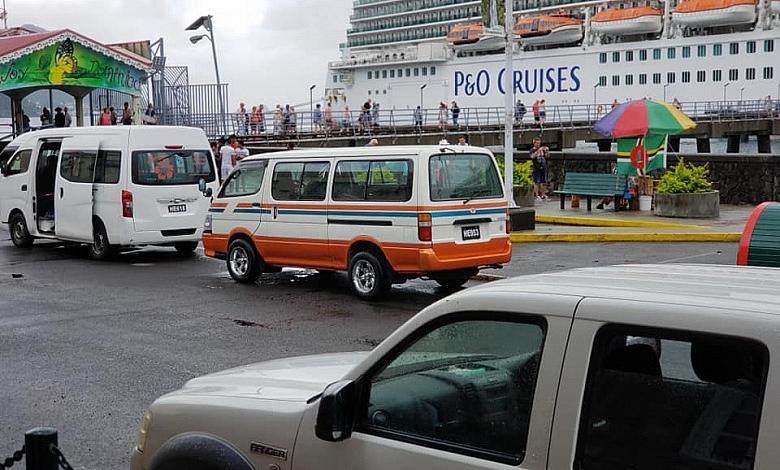The Dominica Economy

The Dominica Economy reflects the island’s rich natural resources, diverse culture, and strategic efforts toward sustainable development. As a small island nation in the Caribbean, Dominica has navigated historical challenges and leveraged its unique environment to build an economy emphasising agriculture, tourism, and renewable energy. The nation’s economic path is closely connected to its natural features, infrastructure advancements, and the influential figures who have shaped its policies and growth.
Historical Evolution of The Dominica Economy
The Dominica Economy has been shaped by its colonial past, leaving a lasting impact. The island was among the last in the Caribbean to be colonized, primarily due to the formidable resistance of the indigenous people, the Kalinago. In 1763, France ceded Dominica to Great Britain, which established colonial rule in 1805. The abolition of slavery in 1833 marked a significant shift, and by 1835, individuals of African descent began participating in the legislative assembly. This period laid the groundwork for Dominica’s agrarian economy, focusing on crops like sugarcane and later bananas.
The 20th century introduced new economic dynamics. In 1979, Hurricane David caused extensive damage, prompting substantial emigration and economic downturns.
Cultural Heritage and Influential Figures
Dominica’s economic development is deeply intertwined with its cultural heritage and the contributions of influential leaders. Dame Mary Eugenia Charles, the Caribbean’s first female prime minister, championed economic diversification and international partnerships, setting a foundation for modern growth. Prime Minister Roosevelt Skerrit emphasizes climate resilience and infrastructure improvements. The nation’s cultural landmarks and traditions, supported by community engagement, further enrich the economic landscape, connecting tourism, heritage, and sustainability into a cohesive narrative for national progress.
Key Economic Sectors and Diversification Efforts
Dominica’s economy is characterized by contributions from three primary sectors: agriculture, industry, and services. The distribution of these sectors has evolved, reflecting shifts in economic activities and external influences.
Agriculture
Agriculture has traditionally been a cornerstone of Dominica’s economy, with bananas being a significant export. However, the sector’s contribution to GDP has fluctuated, influenced by natural disasters and market access changes. In 2017, agriculture accounted for 22.3% of GDP, but by 2022, its share had decreased to 15.82%. The government has promoted diversification into crops like coffee, patchouli, and tropical fruits to reduce dependency on bananas.
Main Crops
- Bananas: Once the primary export, production has declined due to global competition and trade liberalization.
- Citrus Fruits: Oranges, grapefruits, and limes are cultivated for local consumption and export.
- Root Crops: Dasheen, yams, and sweet potatoes support local food security.
- Spices and Herbs: Including bay leaves and vanilla, contributing to niche export markets.
Industry
The industrial sector encompasses manufacturing, construction, and utilities. Its contribution to GDP has remained relatively stable, around 12-15%. Manufacturing activities include soap production, coconut oil processing, and furniture making. The sector faces high production costs and competition from larger economies.
Services
The services sector is the most significant contributor to Dominica’s GDP, reflecting the economy’s shift towards service-oriented activities. In 2013, services accounted for 68.7% of GDP, but this share declined to 58.02% by 2022. Tourism is pivotal in this sector, leveraging Dominica’s natural attractions to draw eco-tourists and adventure seekers. Financial services, including offshore banking and payment processing, have also expanded, contributing to economic diversification.
Recent Trends
In recent years, Dominica has focused on building a climate-resilient economy, emphasizing sustainable agriculture, renewable energy development, and strengthening the tourism industry. Collaborations with international organizations aim to support these initiatives and foster a sustainable and inclusive economic future.
Key Economic Indicators
Dominica’s economic performance can be assessed through various indicators:
| Indicator | Value (2023) |
|---|---|
| Nominal GDP | $653.99 million |
| Real GDP Growth Rate | 4.71% |
| GDP per Capita | $8,954 |
| Inflation Rate | 1.36% (2018) |
| Unemployment Rate | 23% (2000) |
| Population Below the Poverty Line | 29% (2009) |
Sources: World Bank, Macrotrends, Central Statistics Office of Dominica
Over the past three decades, Dominica’s economy has experienced significant fluctuations due to various factors, including natural disasters and global economic conditions. Below is a summary of key economic indicators from 1993 to 2023:
| Year | Nominal GDP (Million US$) | Real GDP Growth Rate (%) | GDP per Capita (US$) |
|---|---|---|---|
| 1993 | 0.20 | 2.16 | 2,800 |
| 1994 | 0.22 | 0.03 | 3,000 |
| 1995 | 0.24 | 3.03 | 3,200 |
| 1996 | 0.26 | 3.10 | 3,400 |
| 1997 | 0.28 | 2.19 | 3,600 |
| 1998 | 0.30 | 3.77 | 3,800 |
| 1999 | 0.32 | 0.35 | 4,000 |
| 2000 | 0.34 | 2.34 | 4,200 |
| 2001 | 0.36 | -0.06 | 4,400 |
| 2002 | 0.38 | -2.83 | 4,600 |
| 2003 | 0.40 | 6.35 | 4,800 |
| 2004 | 0.42 | 3.05 | 5,000 |
| 2005 | 0.44 | 0.66 | 5,200 |
| 2006 | 0.46 | 4.66 | 5,400 |
| 2007 | 0.48 | 6.35 | 5,600 |
| 2008 | 0.50 | 7.12 | 5,800 |
| 2009 | 0.52 | -1.17 | 6,000 |
| 2010 | 0.54 | 0.67 | 6,200 |
| 2011 | 0.56 | -0.22 | 6,400 |
| 2012 | 0.58 | -1.06 | 6,600 |
| 2013 | 0.60 | -1.00 | 6,800 |
| 2014 | 0.62 | 4.75 | 7,000 |
| 2015 | 0.64 | -2.73 | 7,200 |
| 2016 | 0.66 | 2.76 | 7,400 |
| 2017 | 0.68 | -6.62 | 7,600 |
| 2018 | 0.50 | 3.55 | 7,003 |
| 2019 | 0.61 | 5.50 | 8,547 |
| 2020 | 0.50 | -16.60 | 7,003 |
| 2021 | 0.56 | 6.89 | 7,668 |
| 2022 | 0.61 | 5.65 | 8,347 |
| 2023 | 0.65 | 4.71 | 8,954 |
Key Observations
- Natural Disasters: The economy contracted significantly in 2017 due to Hurricane Maria, with a real GDP growth rate of -6.62%. Similarly, in 2020, the COVID-19 pandemic led to a substantial decline in economic activity, with a real GDP growth rate of -16.60%.
- Recovery Periods: Following these downturns, Dominica showed resilience with positive growth rates in subsequent years, such as 6.89% in 2021 and 5.65% in 2022.
- Per Capita Income: GDP per capita has generally increased over the 30 years, rising from approximately $2,800 in 1993 to $8,954 in 2023, indicating overall economic growth despite periodic setbacks.
Government Initiatives and Infrastructure Development
The government of Dominica operates through various ministries and agencies dedicated to economic development and resource management. The Ministry of Finance oversees fiscal policies, while the Ministry of Agriculture focuses on sustainable agricultural practices. The Climate Resilience Execution Agency for Dominica (CREAD), established in 2018, spearheads efforts to enhance the island’s resilience to climate change and natural disasters.
Infrastructure development has been a priority, with investments in transportation networks, energy production, and telecommunications. For instance, the Edward Oliver Leblanc Highway is a critical artery connecting key regions. Energy infrastructure includes facilities like DOMLEC’s Fond Cole Power Station, which contributes to the island’s electricity supply.
Early Economy and Colonial Influence
Before European colonization, the Kalinago people were the island’s original inhabitants. They practised a subsistence economy based on fishing, hunting, and agriculture. They cultivated cassava, sweet potatoes, and yams using fertile volcanic soil.
In the 17th century, European powers, primarily the French and British, contested control over Dominica due to its strategic location and fertile land. The Treaty of Paris in 1763 ceded the island to the British, who established plantations growing sugarcane, coffee, and cocoa. The plantation economy relied heavily on the labour of enslaved Africans, which significantly shaped the island’s demographic and social structures.
20th Century Developments
In the mid-20th century, bananas became the dominant export crop, especially after the establishment of preferential trade agreements with the United Kingdom under the Windward Islands Banana Growers Association (WINBAN). Agriculture remained the backbone of the economy, but over-reliance on a single crop made it vulnerable to market fluctuations and natural disasters, such as hurricanes.
Natural Resources and Economic Sectors
Dominica’s natural resources drive its key economic sectors, including agriculture, tourism, and renewable energy. Fertile volcanic soil supports crops like bananas and spices, while rainforests and marine reserves boost eco-tourism. Geothermal and hydroelectric projects harness volcanic activity for sustainable energy and vibrant fisheries sustain communities, making natural resources essential to the island’s economic resilience and growth.
Agriculture and Economic Importance
Agriculture remains a cornerstone of the economy, providing employment and supporting food security. Dominica’s fertile volcanic soil fosters a variety of crops, including bananas, citrus fruits, and root vegetables. While banana production once dominated exports, global competition and trade changes have shifted its prominence, paving the way for cultivating other high-value crops such as spices and herbs, including bay leaves and vanilla. This agricultural diversity supports local consumption and niche export markets, making agriculture a vital sector for rural livelihoods and national revenue.
Tourism and Natural Attractions
Dominica’s reputation as the “Nature Island of the Caribbean” makes tourism a leading economic driver. The island’s natural beauty attracts eco-tourists and adventure seekers to landmarks like Morne Trois Pitons National Park, a UNESCO World Heritage Site, and the Caribbean’s longest hiking trail, the Waitukubuli National Trail. Coastal attractions such as Champagne Reef provide unique underwater geothermal experiences. Dominica’s eco-tourism offerings are supported by its extensive marine and forest reserves, safeguarding biodiversity and cultural heritage. This alignment between tourism and conservation amplifies the sector’s economic and environmental value.
Energy and Renewable Resources
Dominica’s volcanic activity provides immense potential for renewable energy. The Geothermal Power Plant is central to the nation’s energy strategy, aiming to harness geothermal energy for domestic use and export to nearby islands. Existing hydroelectric facilities complement this by contributing to the renewable energy mix, reducing reliance on fossil fuels and enhancing energy resilience. These initiatives align with global sustainability goals while creating opportunities for economic growth through cleaner energy solutions.
Fisheries and Marine Economy
The fishing industry is integral to coastal communities, supporting livelihoods and food security. Dominica’s waters are rich in species such as tuna, marlin, and snapper, which sustain local markets and exports. Efforts by the government to modernize fishing fleets and enhance storage facilities aim to boost the industry’s productivity and economic contribution. Additionally, marine conservation areas such as Cabrits National Park Marine Section protect critical ecosystems, ensuring the sustainability of fishing resources for future generations.
Infrastructure and Connectivity
Dominica’s infrastructure is pivotal in connecting its communities and supporting economic activities. The road network, spanning approximately 800 kilometers, links towns and villages despite the challenges posed by mountainous terrain. Major transportation hubs like Douglas-Charles Airport and the Deep Water Harbour at Woodbridge Bay in Fond Cole facilitate international trade and tourism, while the Edward Oliver LeBlanc Highway remains a vital artery for domestic travel. Telecommunications services, provided by FLOW and Digicel, enhance connectivity for businesses and residents, underpinning economic development and digital innovation.
Government Policies and Economic Diversification
Government initiatives play a crucial role in shaping Dominica’s economic landscape. The Ministry of Finance oversees fiscal management and financial planning, while agencies like Invest Dominica Authority attract investment and foster business growth. The Citizenship by Investment (CBI) program is a significant revenue source that funds infrastructure projects and boosts foreign exchange reserves. The AID Bank, Dominica Agricultural Industrial and Development Bank, also supports sectors like agriculture and tourism, ensuring long-term economic sustainability through targeted financing.
Dominica’s Natural Resources will Drive the Economy.
Dominica’s natural resources, diverse economic sectors, and innovative energy initiatives form the backbone of its sustainable development. The island’s rich biodiversity and focus on eco-tourism, agriculture, and renewable energy highlight its resilience and global relevance. As Dominica continues to balance growth with environmental conservation, its strategic policies and community-driven efforts position it as a model for sustainable economic and ecological harmony in the Caribbean region.




